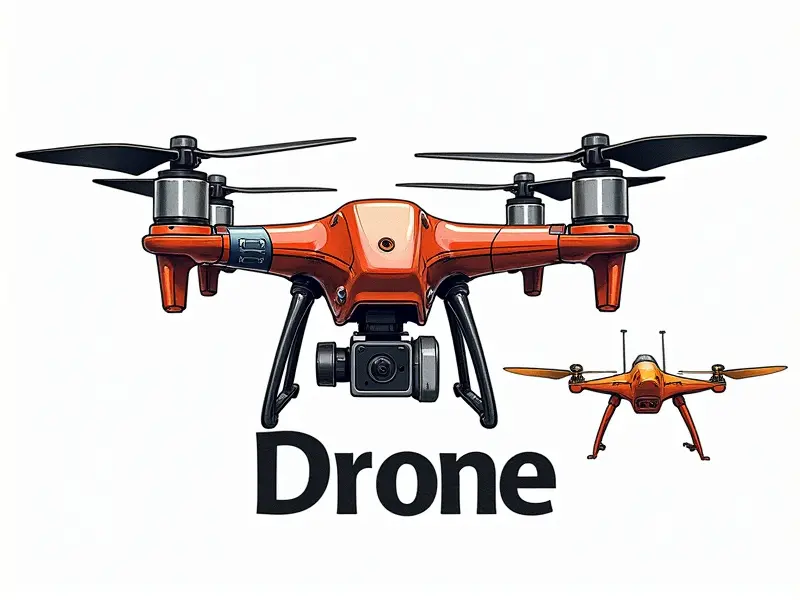How to fly Syma drones in rain?

Can You Fly Syma Drones in the Rain?
Flying your Syma drone during a light shower or even a downpour might seem tempting, but it's crucial to understand that these devices are not designed for prolonged exposure to water. While some models may handle brief encounters with moisture, flying them under heavy rain can lead to severe damage and potential malfunction.
Flying Syma Drones During a Light Shower
When you encounter light showers while out with your Syma drone, it's best to exercise caution. Although the amount of water is minimal, even brief exposure can compromise the internal electronics. If possible, seek shelter or wait for the rain to pass before resuming flight.
Tips for Using Syma Drones in Drizzle
- Monitor Weather Conditions: Always check weather forecasts and avoid flying during predicted drizzle.
- Cover Your Drone: Use a waterproof cover or bag to protect your drone if you must fly under light rain conditions.
Protect Your Syma Drone from Rainy Conditions
To safeguard your Syma drone during rainy weather, it's essential to take preventive measures. Consider investing in protective gear such as a waterproof case or using silicone-based water repellent sprays designed for electronics.
Syma Drone Weatherproofing Guide
- Waterproof Covers: Utilize specialized drone covers that are specifically made to shield your device from moisture and debris.
- Repellent Sprays: Apply water repellent sprays designed for electronic devices, ensuring a protective layer against light rain.
Tips for Using Syma Drones in Drizzle
Flying your drone during drizzle requires extra attention to detail. Here are some practical tips to keep your device safe:
- Keep Distance from Water Sources: Avoid flying near water bodies or areas with significant moisture accumulation.
- Check Battery Condition: Ensure the battery is fully charged and dry before attempting flight in drizzle conditions.
Handling Wet Conditions with Syma Drones
Navigating wet conditions can be challenging, but by following these guidelines, you can minimize risks:
- Frequent Checks: Regularly inspect your drone for signs of moisture or damage before and after flights.
- Dry Off Thoroughly: Use a soft cloth to dry off any wet parts immediately after exposure to drizzle or light rain.
Syma Drone Flight Stability in Rainy Conditions
Maintaining flight stability during rainy weather is crucial. The added weight of water and reduced visibility can affect performance:
- Reduce Speed: Lower the drone's speed to maintain control and prevent sudden drops or crashes.
- Increase Altitude: Fly at a higher altitude to avoid obstacles and reduce the impact of wind gusts during rain.
Navigating Wet Conditions with Syma Drones
Flying in wet conditions requires careful planning and execution. Here are some additional tips for navigating successfully:
- Test Flight: Conduct a brief test flight under dry conditions to ensure all systems are functioning properly.
- Avoid Windy Areas: Stay clear of windy areas where water droplets can be blown into the drone's components.
Is It Safe to Fly Syma Drones in a Light Downpour?
Flying your Syma drone during light downpours is generally not recommended. Even brief exposure to heavy rain can cause irreversible damage:
- Risk of Short Circuits: Water can lead to short circuits, damaging critical components.
- Deterioration of Electronics: Moisture can cause rust and corrosion over time, reducing the lifespan of your drone.
Protecting Your Syma Drone from Rain
To protect your Syma drone effectively during rainy conditions, it's essential to use appropriate protective measures. Consider investing in a high-quality waterproof cover or case:
- Select Quality Covers: Choose covers that are durable and provide complete protection against water ingress.
- Dry Storage: Store your drone in a dry place away from moisture to prevent long-term damage.
Syma Drone Flight Stability in Rainy Conditions
Maintaining stability during rainy conditions is crucial for safe flight. Here are some additional tips:
- Monitor Battery Levels: Keep an eye on battery levels as water can increase resistance and drain power faster.
- Avoid Flying Near Water Bodies: Stay away from lakes, rivers, or other bodies of water to prevent accidental splashes.
Conclusion
Flying Syma drones in rain poses significant risks that can lead to damage and malfunction. While it may be tempting to fly during light showers or drizzle, the best practice is to avoid exposure altogether. By investing in protective gear such as waterproof covers and using water repellent sprays, you can safeguard your drone from potential harm. Always prioritize safety over convenience when flying under wet conditions.

